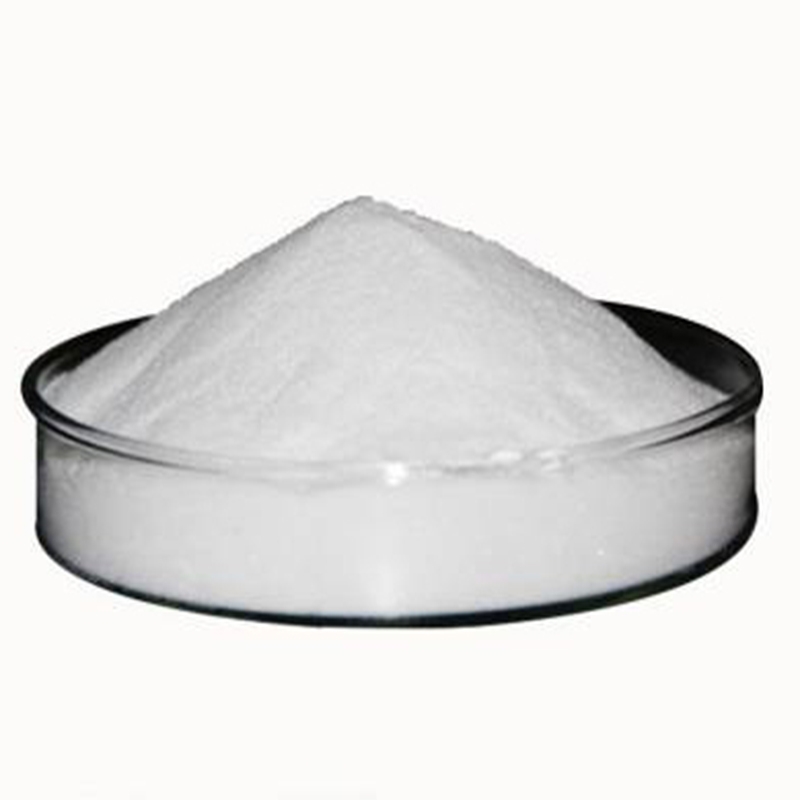-
Categories
-
Pharmaceutical Intermediates
-
Active Pharmaceutical Ingredients
-
Food Additives
- Industrial Coatings
- Agrochemicals
- Dyes and Pigments
- Surfactant
- Flavors and Fragrances
- Chemical Reagents
- Catalyst and Auxiliary
- Natural Products
- Inorganic Chemistry
-
Organic Chemistry
-
Biochemical Engineering
- Analytical Chemistry
-
Cosmetic Ingredient
- Water Treatment Chemical
-
Pharmaceutical Intermediates
Promotion
ECHEMI Mall
Wholesale
Weekly Price
Exhibition
News
-
Trade Service
49 billion yuan
According to International Trade Center (ITC) data, Russian king crab and snow crab exports will total $2.
4 billion in 2021
.
In 2022, the catch quota for Russian king crab will be 94% of the world's
.
4 billion in 2021
.
In 2022, the catch quota for Russian king crab will be 94% of the world's
.
Last year, Russia exported $1.
49 billion worth of frozen king and snow crabs, of which $540 million went to South Korea
.
A batch of crabs caught in the Russian Far East was transported from Japan and South Korea to the United States
.
In addition, China and South Korea imported live crabs worth US$546 million and US$335 million respectively, accounting for 95% of the export share of live crabs
.
49 billion worth of frozen king and snow crabs, of which $540 million went to South Korea
.
A batch of crabs caught in the Russian Far East was transported from Japan and South Korea to the United States
.
In addition, China and South Korea imported live crabs worth US$546 million and US$335 million respectively, accounting for 95% of the export share of live crabs
.
King crabs and snow crabs from the Russian Barents Sea are mainly supplied to Europe
.
Last year, Russia exported $929 million worth of frozen snow crabs and king crabs to the Netherlands, which were then sold to other European countries
.
.
Last year, Russia exported $929 million worth of frozen snow crabs and king crabs to the Netherlands, which were then sold to other European countries
.
Japan is also one of the important importers of Russian crabs.
Last year, the transaction volume of cooked frozen snow crab reached 15,515 tons, and the transaction volume of cooked frozen king crab reached 1,521 tons.
Japan's live crab market is relatively small
.
Last year, the transaction volume of cooked frozen snow crab reached 15,515 tons, and the transaction volume of cooked frozen king crab reached 1,521 tons.
Japan's live crab market is relatively small
.
▼ European and American sanctions, the new US bill covers king crab products
However, the imposition of trade sanctions by Western countries on Russia has forced the supply of Russian king crabs to the United States may be interrupted, and more and more king crabs are flowing to China and South Korea, leading to a new dilemma for the global market
.
.
Crabs imported from Russia must display a country of origin label
.
However, an exception to the U.
S.
country of origin labeling law is that cooked crab sold prepackaged by the manufacturer must have the country of origin indicated on the package, but cooked crab sold at the fish counter or in a cooler is allowed without the label.
Sold without specifying its country of origin
.
.
However, an exception to the U.
S.
country of origin labeling law is that cooked crab sold prepackaged by the manufacturer must have the country of origin indicated on the package, but cooked crab sold at the fish counter or in a cooler is allowed without the label.
Sold without specifying its country of origin
.
But two new bills in the US cover this situation
.
The U.
S.
Innovation and Competition Act of 2021, among its broad regulations, specifically requires country-of-origin labels for cooked king crab and tanned crab
.
A separate measure called the US Competition Act would expand the National Oceanic and Atmospheric Administration's (NOAA) Seafood Import Monitoring Program (SIMP) to all seafood categories
.
Currently SIMP only applies to 13 types of seafood, including king crab
.
.
The U.
S.
Innovation and Competition Act of 2021, among its broad regulations, specifically requires country-of-origin labels for cooked king crab and tanned crab
.
A separate measure called the US Competition Act would expand the National Oceanic and Atmospheric Administration's (NOAA) Seafood Import Monitoring Program (SIMP) to all seafood categories
.
Currently SIMP only applies to 13 types of seafood, including king crab
.
In light of this, the June ban on Russian seafood imports could bar all Russian-origin crabs from entering the United States
.
.
▼ The U.
S.
price has skyrocketed and the supply is insufficient, and other varieties are difficult to completely replace
S.
price has skyrocketed and the supply is insufficient, and other varieties are difficult to completely replace
U.
S.
crab suppliers, feeling the pain of Russian seafood import sanctions, have done little for a market that has seen unprecedented demand over the past two years, with mixed results on their ability to fill the supply gap to provide buyers with alternatives
.
S.
crab suppliers, feeling the pain of Russian seafood import sanctions, have done little for a market that has seen unprecedented demand over the past two years, with mixed results on their ability to fill the supply gap to provide buyers with alternatives
.
"The market is volatile and very dynamic right now
.
No one knows how this will play out," said Alaska Bering Crab executive director
.
.
No one knows how this will play out," said Alaska Bering Crab executive director
.
The Bristol Bay red king crab fishery was cancelled last September when the Alaska Department of Fish and Game (ADF&G) determined that the biomass of Bristol Bay red king crab was below the threshold necessary to open the fishery for the 2021-2022 season
.
He estimates that the closures have resulted in more than $200 million (€181.
6 million) worth of harvest losses, and are now putting more pressure on king crab supplies
.
.
He estimates that the closures have resulted in more than $200 million (€181.
6 million) worth of harvest losses, and are now putting more pressure on king crab supplies
.
Other crab supplies are also under pressure
.
Last October, ADF&G set the 2022 snow crab harvest at the lowest level in more than 40 years
.
Alaska's largest snow crab supplier said it has contracted U.
S.
buyers for its product, leaving little excess for new customers looking for crab alternatives
.
.
Last October, ADF&G set the 2022 snow crab harvest at the lowest level in more than 40 years
.
Alaska's largest snow crab supplier said it has contracted U.
S.
buyers for its product, leaving little excess for new customers looking for crab alternatives
.
Stop companies that source king crabs from Russia and switch to other species, such as Dungeness crabs from the US and Canada
.
Oregon harvests about 80 percent of its catch in the first eight weeks of the season, which begins in December and runs through August
.
Most of the Dungeness crabs in Oregon were caught, with a record $86.
5 million (78.
5 million euros) in earnings
.
.
Oregon harvests about 80 percent of its catch in the first eight weeks of the season, which begins in December and runs through August
.
Most of the Dungeness crabs in Oregon were caught, with a record $86.
5 million (78.
5 million euros) in earnings
.
Dungeness crab landings have ranged from 8 million pounds to 54 million pounds in the waters off California, Oregon and Washington over the past 50 seasons, peaking roughly every 10 years, according to the Pacific National Marine Fisheries Commission
.
Crabs caught in these states are mainly sold domestically, but the current catch is not enough to satisfy every buyer, who is scrambling to replace the crabs they previously got from Russia or Alaska
.
.
Crabs caught in these states are mainly sold domestically, but the current catch is not enough to satisfy every buyer, who is scrambling to replace the crabs they previously got from Russia or Alaska
.
"Demand is only going to increase," said Hugh Link, executive director of the Oregon Dungeness Crab Council
.
More than 14 million pounds of crabs have been landed in the state, valued at more than $80 million (€72.
8 million) off-board
.
.
More than 14 million pounds of crabs have been landed in the state, valued at more than $80 million (€72.
8 million) off-board
.
"We're heading for the highest value season we've ever seen," said the coastal shellfish manager for the Washington Department of Fish and Wildlife
.
.
▼ Russia tries to increase shipments to China and South Korea
The general manager of Norwegian king crab exporter Troika Seafood said that China is the world's largest live crab market, and only China can absorb Russian production and bear the price pressure
.
Norway exported $67 million worth of live crabs in 2021, of which about $42 million was sold to mainland China, Hong Kong and South Korea, accounting for 60 percent of total exports, it said
.
.
Norway exported $67 million worth of live crabs in 2021, of which about $42 million was sold to mainland China, Hong Kong and South Korea, accounting for 60 percent of total exports, it said
.
From June 23, the United States will ban the entry of all Russian-produced seafood, including products re-exported from South Korea
.
Crab veteran Les Hodges said Russia's Far East fleet has responded aggressively by trying to evade sanctions by accelerating shipments to China and South Korea, adding further pressure to the market
.
.
Crab veteran Les Hodges said Russia's Far East fleet has responded aggressively by trying to evade sanctions by accelerating shipments to China and South Korea, adding further pressure to the market
.
The Russian Crab Company, Russia's largest crab producer, declined to comment on the trade sanctions
.
.
A Chinese king crab importer said that the price of frozen crabs in Russia has fallen in recent weeks, and some imports of live crabs (via Hunchun) have been affected by some aspects of epidemic control
.
There is good demand for frozen crab in mainland China, which is mainly consumed in self-catering channels in hotels
.
.
There is good demand for frozen crab in mainland China, which is mainly consumed in self-catering channels in hotels
.
The above-mentioned sources said that Russia may also export some frozen crab raw materials to China, which will be processed into crab meat and then exported to other countries, such as the United States
.
This part of the product is not affected by the sanctions, although the number is currently limited
.
.
This part of the product is not affected by the sanctions, although the number is currently limited
.
Given the size of the Chinese market, the domestic epidemic problem could be more far-reaching than Western sanctions or boycotts
.
"China is like a mystery, July, August, September will usher in our season, but it's hard to predict what the Chinese market will look like
.
Europe has opened up, and although there are still many cases, people's lives are starting to normalize, China is in lockdown
.
"
.
"China is like a mystery, July, August, September will usher in our season, but it's hard to predict what the Chinese market will look like
.
Europe has opened up, and although there are still many cases, people's lives are starting to normalize, China is in lockdown
.
"







